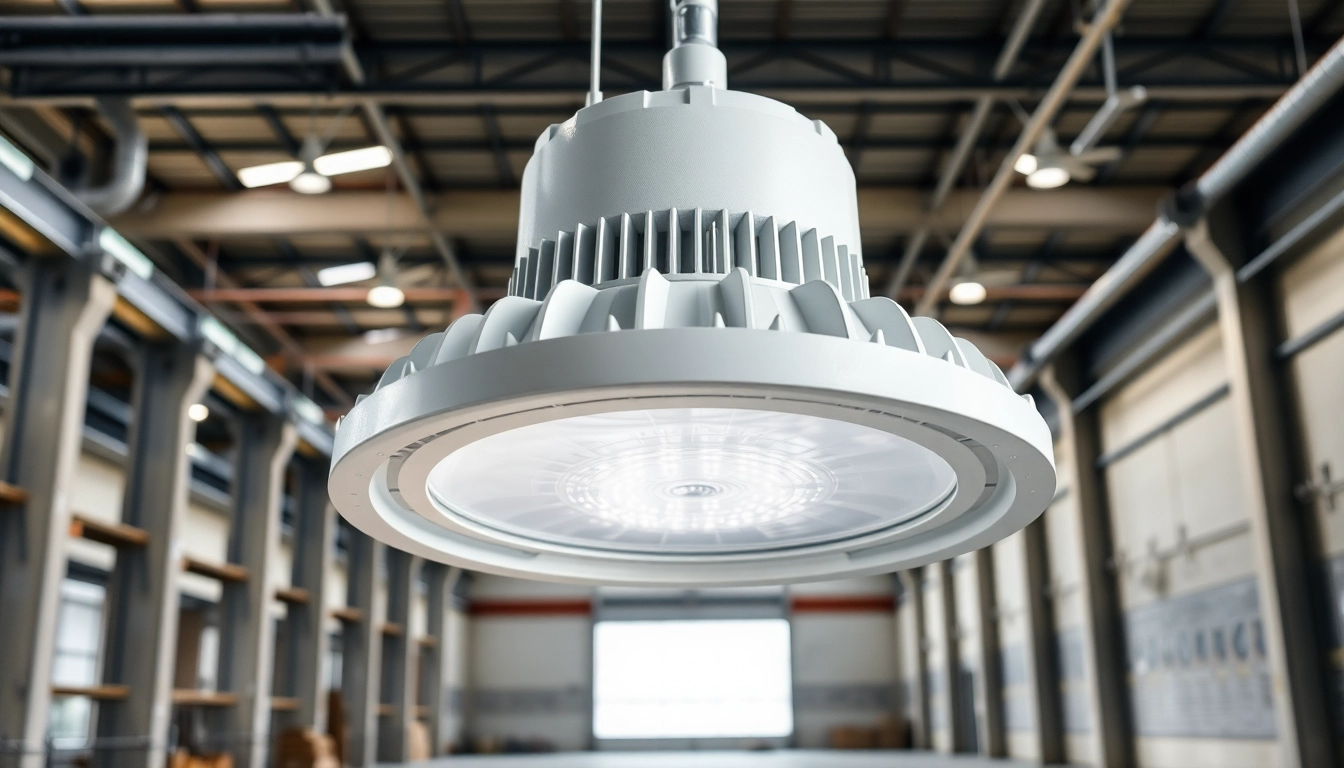Understanding Vapor Tight Fixtures
Definition and Purpose
In environments where moisture, dust, and debris are prevalent, maintaining optimal lighting conditions can pose a significant challenge. This is where Vapor Tight fixtures shine. These specially designed light fixtures are constructed to provide a reliable, lasting solution in tough conditions, making them ideal for various industrial and outdoor applications. They are sealed tight to prevent moisture and contaminants from entering the fixture, ensuring longevity and efficiency in performance.
Key Features and Benefits of Vapor Tight
Vapor Tight fixtures boast several essential features that set them apart:
- Durability: Typically made from robust materials such as polycarbonate or fiberglass, these fixtures resist impacts and corrosion, making them suitable for harsh environments.
- Weatherproof Sealing: Equipped with gaskets and sealing mechanisms that prevent the ingress of water, dust, and other particles, these fixtures ensure continued operation in wet conditions.
- Energy Efficiency: Many Vapor Tight fixtures are now available in LED options, which provide significant energy savings and longer lifespan compared to traditional lighting solutions.
- Versatile Applications: They are ideal for various environments, including parking garages, food processing areas, warehouses, and exterior areas exposed to the elements.
Implementing Vapor Tight fixtures helps reduce maintenance costs associated with frequent replacements and repairs due to damage from environmental factors.
Common Applications for Vapor Tight Lighting
Vapor Tight lighting can be utilized in numerous locations where standard fixtures may struggle to perform effectively:
- Industrial Facilities: Manufacturing plants and warehouses often require reliable illumination that can withstand dust, chemicals, and moisture.
- Outdoor Parking Lots: These fixtures provide safety and visibility, ensuring well-lit areas for both pedestrians and vehicles.
- Food Processing Zones: In areas where hygiene is paramount, Vapor Tight fixtures prevent contamination by being easy to clean and entirely sealed.
- Agricultural Settings: Greenhouses and farms can benefit from durable lighting solutions that withstand seasonal variations in weather.
Choosing the Right Vapor Tight Lighting
Factors to Consider when Selecting Vapor Tight
When choosing Vapor Tight fixtures, consider the following factors to ensure you select the right product for your needs:
- Environment: Assess the specific conditions of the setting. Will the fixture be exposed to high humidity, dust, or chemicals? Understanding the environment is crucial for selecting a fixture that can explicitly meet those demands.
- Light Output: Determine the necessary lumens required for optimal visibility. Different applications may require varying levels of brightness.
- Energy Consumption: Evaluate the energy efficiency of the fixtures. LED options, in particular, yield considerable savings over time due to their lower energy consumption.
- Mounting Options: Consider how the fixtures will be installed. Some may be surface-mounted while others may require suspension.
Comparing Types of Vapor Tight Fixtures
Vapor Tight fixtures come in a variety of types, each designed for specific situations. Here are common types:
- Linear Fixtures: Ideal for long areas, such as warehouses and distribution centers.
- Round Fixtures: Suitable for spaces requiring overhead lighting, like garages.
- Surface Mounts: Often used in areas with lower ceilings where a sleek profile is essential.
Energy Efficiency Standards for Vapor Tight
Energy efficiency is vital for operational cost savings. Look for fixtures that comply with industry standards such as the U.S. Department of Energy’s (DOE) Energy Star program or similar local regulations. These standards ensure fixtures provide sufficient lighting while minimizing energy consumption.
Installation Tips for Vapor Tight Lighting
Essential Tools and Equipment Needed
Proper installation is key to maximizing the performance of your Vapor Tight fixtures. The following tools and equipment will help ensure a successful installation process:
- Electrical drill
- Screwdrivers (flat and Phillips)
- Wire cutters and strippers
- Safety goggles and gloves
- Voltage tester
- Ladder or lift, if required
Step-by-Step Installation Process
Following a systematic installation process will help ensure a safe and effective setup:
- Turn Off Power: Always de-energize the circuit before beginning any electrical work.
- Prepare the Mounting Area: Clean the area where you plan to install the fixture to ensure a secure, stable attachment.
- Connect the Wiring: According to the manufacturer’s instructions, connect the electrical wiring. Use a voltage tester to confirm that the circuit is not active.
- Secure the Fixture: Mount the fixture according to recommended practices, ensuring it is stable and secure.
- Turn On Power: Once everything is assembled, restore power to check that the fixture operates correctly.
Safety Measures during Installation
Before, during, and after installation, adhere to the following safety measures:
- Wear appropriate personal protective equipment (PPE), including gloves and goggles.
- Verify that the installation site is free of water or moisture to prevent electrical hazards.
- Follow local electrical codes and regulations to ensure compliance.
- Have a buddy system in place when working at heights or in potentially hazardous areas.
Maintenance and Care for Vapor Tight Fixtures
Routine Cleaning Procedures
To keep Vapor Tight fixtures in excellent working condition, implement a regular cleaning schedule:
- Dust and Debris Removal: Periodically wipe down the exterior to prevent buildup.
- Inspect Seals: Regularly check the gaskets and seals for wear or damage to maintain water and dust resistance.
- Lightbulb Checks: Verify that all bulbs are functioning and replace as necessary.
Common Issues and Troubleshooting
Common problems may arise with Vapor Tight fixtures, but many can be resolved easily:
- No Light: Ensure that the fixture is receiving power and check for blown bulbs or tripped circuit breakers.
- Flickering Light: Check for loose wiring connections or faulty bulbs.
- Dirt Buildup: If the light output seems dim, it may be due to dirt on the fixture. Regular cleaning can prevent this issue.
When to Seek Professional Help with Vapor Tight
If issues persist or if installation proves challenging, don’t hesitate to hire a qualified electrician. Professional assistance ensures safety and compliance with building codes.
Future Trends in Vapor Tight Lighting
Innovations in Vapor Tight Technology
As technology advances, Vapor Tight fixtures are incorporating smart lighting systems, which allow for remote control and automation. Furthermore, innovations in materials are making fixtures even more durable and lightweight, enhancing performance without compromising structural integrity.
The Impact of LED on Vapor Tight Designs
LED technology has transformed Vapor Tight lighting. These fixtures provide higher lumen output with lower energy consumption and heat output. Additionally, the development of LED-specific designs enhances their compatibility with Vapor Tight applications, ensuring efficiency and longevity.
Market Outlook for Vapor Tight Fixtures
The demand for Vapor Tight fixtures is expected to rise as industries increasingly seek out energy-efficient, durable lighting options for their facilities. As a result, manufacturers will continue to innovate, providing solutions for complex environmental conditions.



